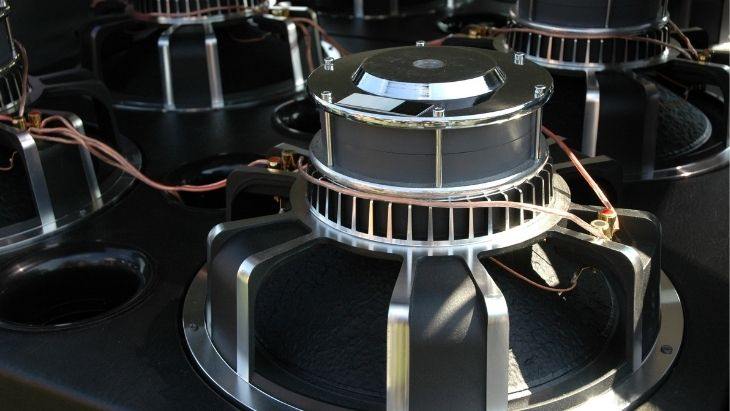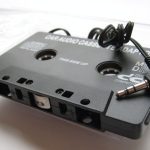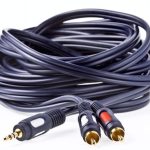A subwoofer is a critical component of any sound system. This loudspeaker allows you to enjoy accurate reproduction of low end frequencies. One of the best great things you can ever do to your audio system is to add a subwoofer. However, to ensure it performs optimally, you may want to make sure that the wiring is done correctly.
Choosing a subwoofer and finding a perfect spot to set up your unit is also critical—but this is the easier part. So how do you go about connecting your subwoofer to your sound system? And can you use a regular speaker wire to connect your subwoofer to the stereo receiver?
These are some of the frequently asked questions in most audio forums. Generally, the answers may vary depending on the subwoofer or cables you are working with. In this article, we’ll discuss how to connect a subwoofer with a speaker wire to the subwoofer adapter on the receiver.
Connecting subwoofer with a speaker wire to subwoofer adapter
Connecting a subwoofer to a receiver or amplifier with a standard speaker may seem like a simple process, but this is not always the case. First off, most modern receivers/amplifiers don’t support subwoofers that use ordinary speaker wires.
Also, sometimes your receiver or amplifier may not include the LFE output for connecting the subwoofer. However, this should not deter you from connecting a subwoofer using a speaker wire to an output that does not include the LFE jack.
The best way around this is to get a subwoofer that is equipped with speaker wire connectors (i.e. high level inputs) to allow you to use the sub with an output that does not have sub RCA connections. In such a scenario, you’ll need to tap into your existing audio system using basic speaker wires.
For this to work, your amp or receiver needs to have speaker-level outputs like those found at the back of regular speakers. However, you may want to ensure that the outputs are designed to power a speaker. The best part is that speaker wires and LFE cables are basically similar in terms of the signals they transmit, so finding one that will sit your system should not be hard.
Also, for your subwoofer to work optimally, you’ll need to ensure that both the subwoofer and the amplifier support RCA connection at the sub’s line in and line out, respectively. In most cases, the subwoofer will have left and right (L and R) RCA connectors to let you know which wire plugs where.
In addition, you’ll need to get a speaker cable that is split (y-cable adapter) on one end and plug it on the subwoofer out before plugging it in the corresponding L and R ports on the receiver/amplifier. Ideally, the process of connecting the subwoofer using a speaker wire to a subwoofer adapter is more or less the same as connecting a speaker to a receiver using a speaker cable.
If your subwoofer comes with one set of spring clips for hooking the speaker wire, then you’ll need to use the speaker output on the receiver to hook up the subwoofer. However, you’ll need to be mindful of channel compatibility and speaker polarity.
Also, you’ll need to keep in mind that your subwoofer will have to share the same ports with other speakers. Instead of overlapping your wire connection, the best way around this is to go for banana plugs that you can use to plug into the back of either the subwoofer or speakers.
On the other hand, if your subwoofer has dual spring clips, it means you can connect the speakers and subwoofer to the receiver independently. Simply put, this setup allows you to run speaker cables to the main speakers and sub from the speaker level inputs but using the same binding post on the amplifier.
Conclusion
The easiest way to connect a new subwoofer to a receiver/amplifier is by using the RCA/phono line out found at the back of the receiver. However, in the absence of this output, you can use a basic speaker wire for the audio input.
If you anticipate your subwoofer system to put out up to 1000W RMS, consider going with a 12 gauge speaker cable. However, for most home audio applications, a 16 gauge cable should work just fine. Also, when ordering your speaker wires, you may want to ensure that you get an extra length to cater for any adjustments.
However, the easiest way around this is going for a powered subwoofer. A powered subwoofer comes with its own inbuilt amplification, so all you need to do is plug it into a power outlet, and you’re good to go. For most audiophiles, a powered subwoofer delivers more than enough bass frequencies for their sound system.
Michael Evanchuk is a San Francisco-based sound engineer with 20 years’ experience installing, troubleshooting, and repairing commercial, automotive, and household sound equipment. Evanchuk owns an auto stereo center, where he offers highly competitive car audio installation and repair services. He has written dozens of articles on different sound engineering topics, all of which have been published in leading journals, blogs, and websites.





